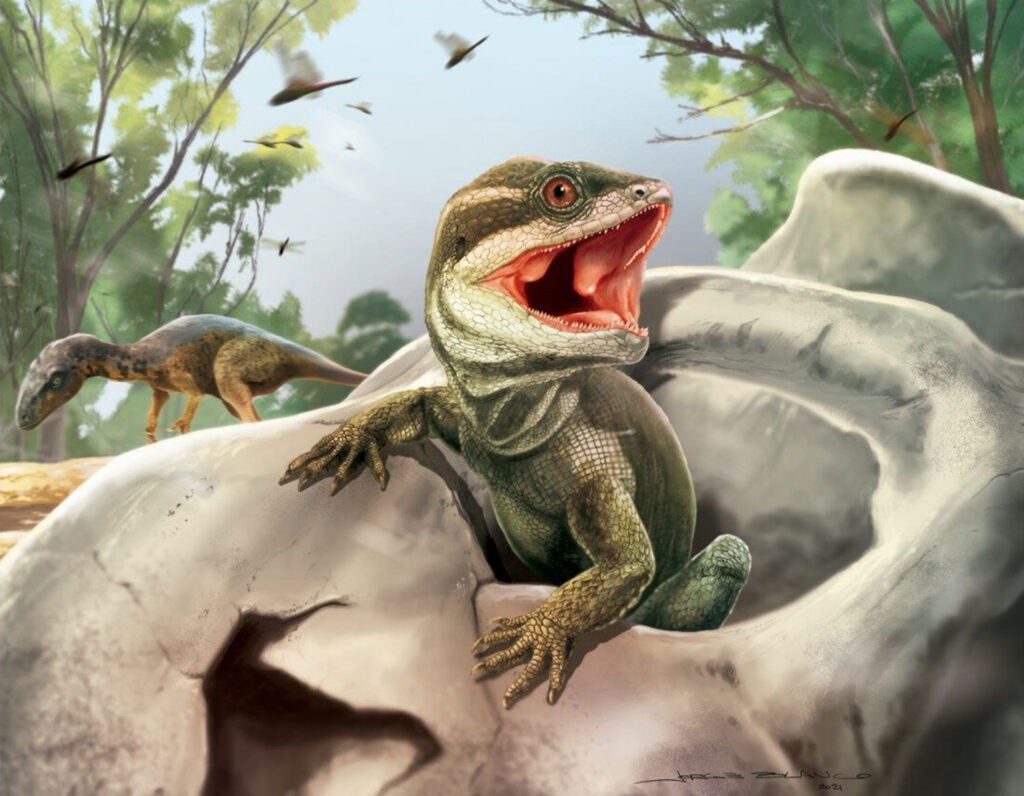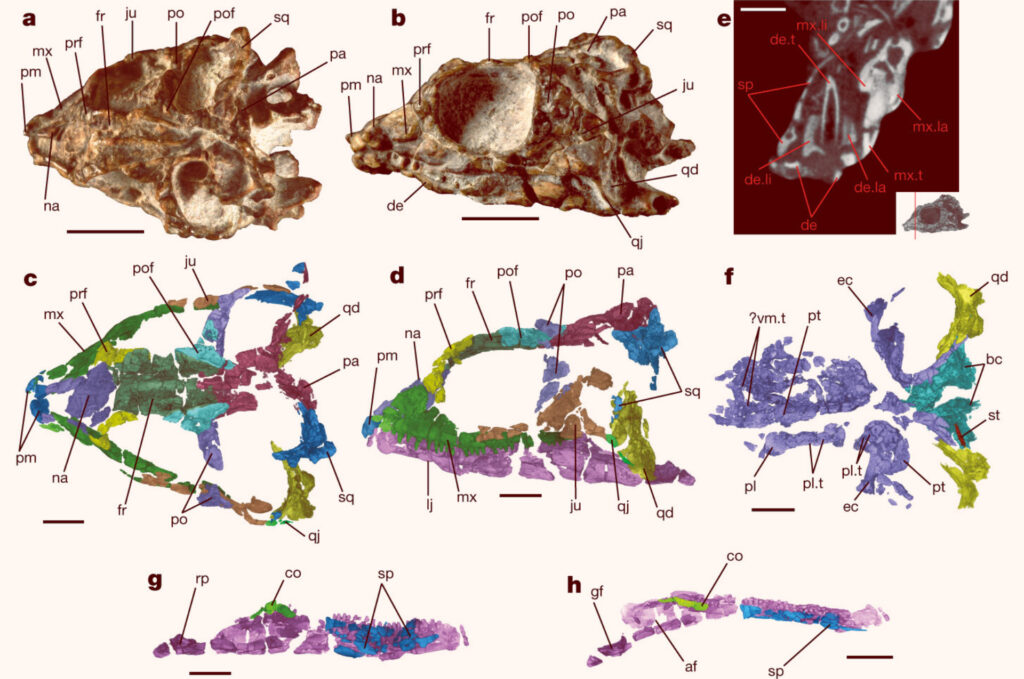@WFS,World Fossil Society,Riffin T Sajeev,Russel T Sajeev
Taytalura alcoberi lived in what is now Argentina during the Late Triassic epoch, approximately 231 million years ago.
The ancient reptile was a member of Lepidosauromorpha, a large group that includes squamates (lizards and snakes) and sphenodontians (tuataras).
“Lepidosauromorphs and archosauromorphs represent the two main branches of the reptile tree of life that have survived to the present,” said Dr. Ricardo Martínez from the Instituto y Museo de Ciencias Naturales at the Universidad Nacional de San Juan and his colleagues.
“Today, the former mostly comprise squamates (about 11,000 species of lizards, snakes and amphisbaenians) and the latter are mostly represented by birds (about 10,800 species).”
“However, unlike for archosauromorphs, the early evolution of lepidosauromorphs remains one of the largest knowledge gaps in reptile evolution.”
Taytalura alcoberi predates the split between squamates and sphenodontians, and is close to the origin of lepidosauromorphs.
The species is about 11 million years younger than the oldest known lepidosauromorphs from Europe, and approximately the same age as the oldest known South American lepidosauromorphs.
The skull of Taytalura alcoberi shares features with modern tuataras, suggesting that several anatomical features, presumed exclusive to sphenodontians, must have originated early in lepidosauromorph evolution.
“Taytalura alcoberi suggests that the strongly evolutionarily conserved skull architecture of sphenodontians represents the plesiomorphic condition for all lepidosaurs, that stem and crown lepidosaurs were contemporaries for at least 10 million years during the Triassic period, and that early lepidosauromorphs had a much broader geographical distribution than has previously been thought,” the paleontologists said.
Their paper was published in the journal Nature.
Source: http://www.sci-news.com/
@WFS,World Fossil Society,Riffin T Sajeev,Russel T Sajeev



 August 31st, 2021
August 31st, 2021  Riffin
Riffin 

 Posted in
Posted in  Tags:
Tags: 